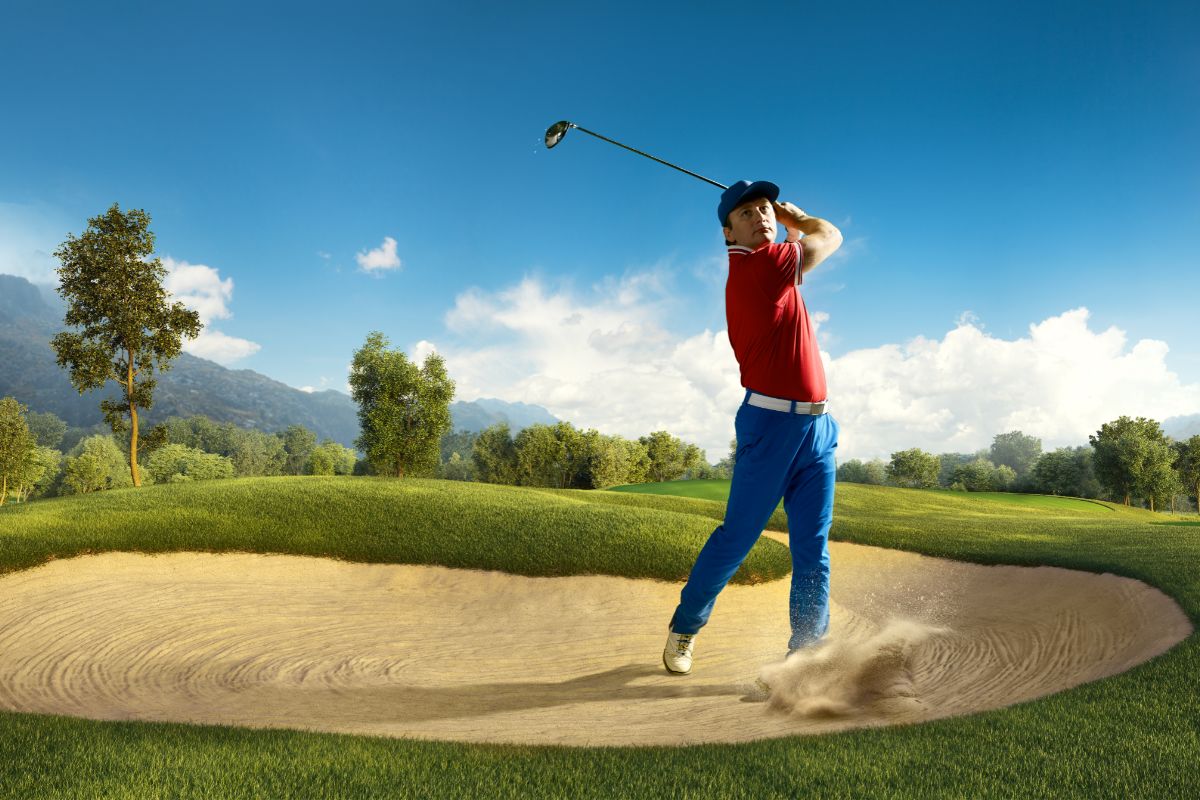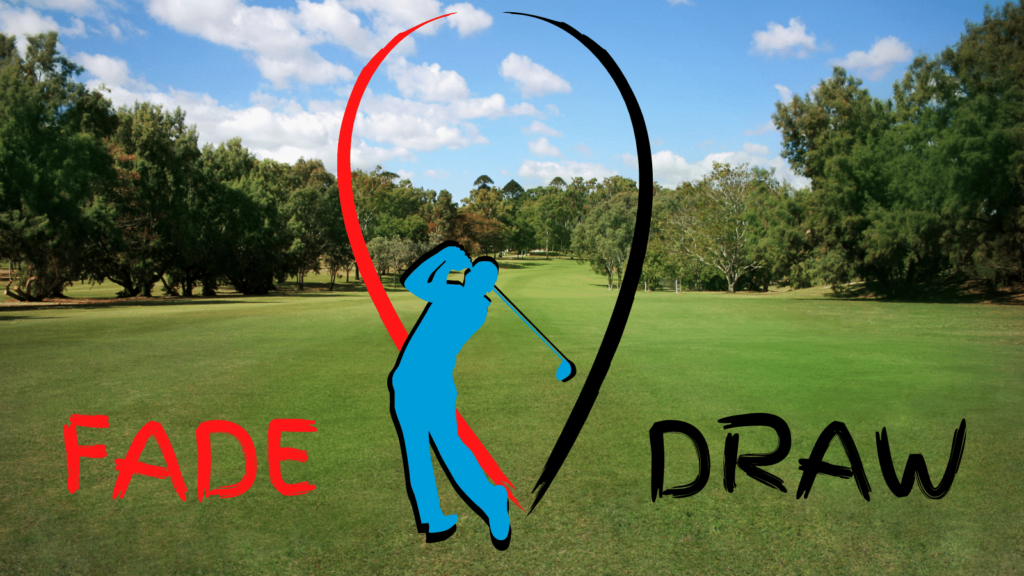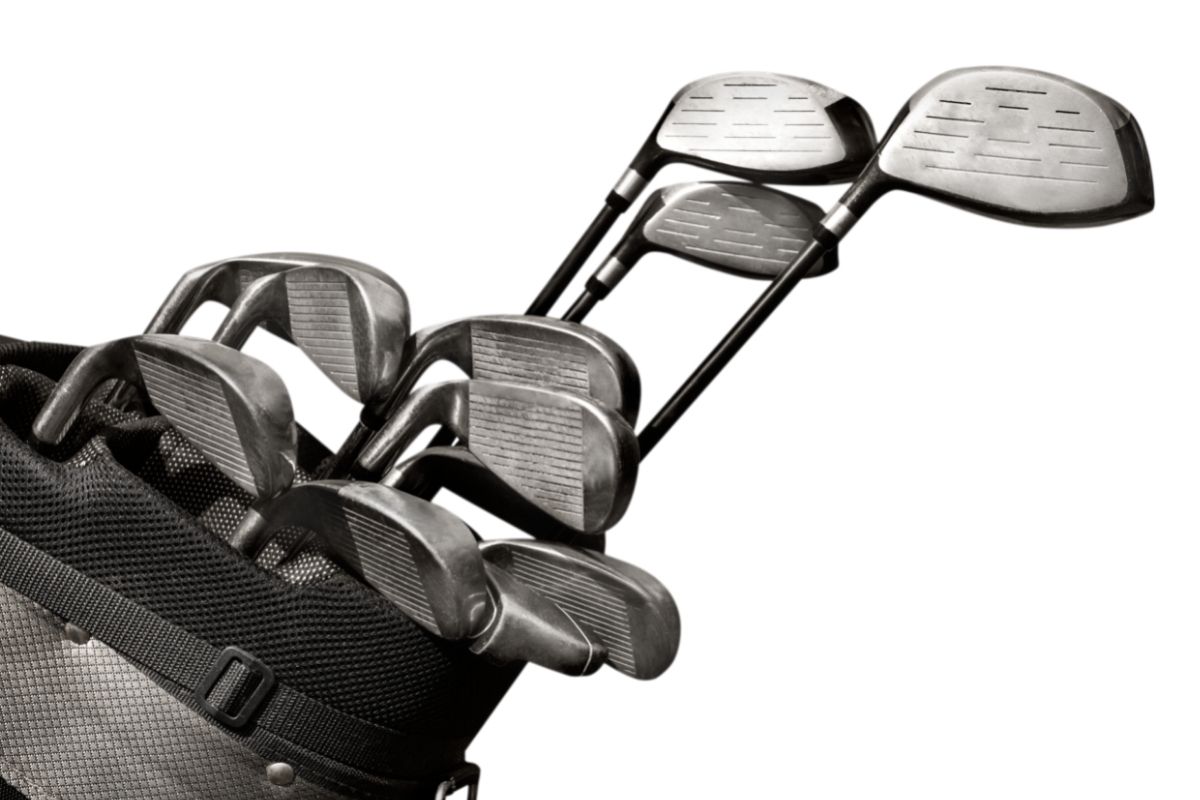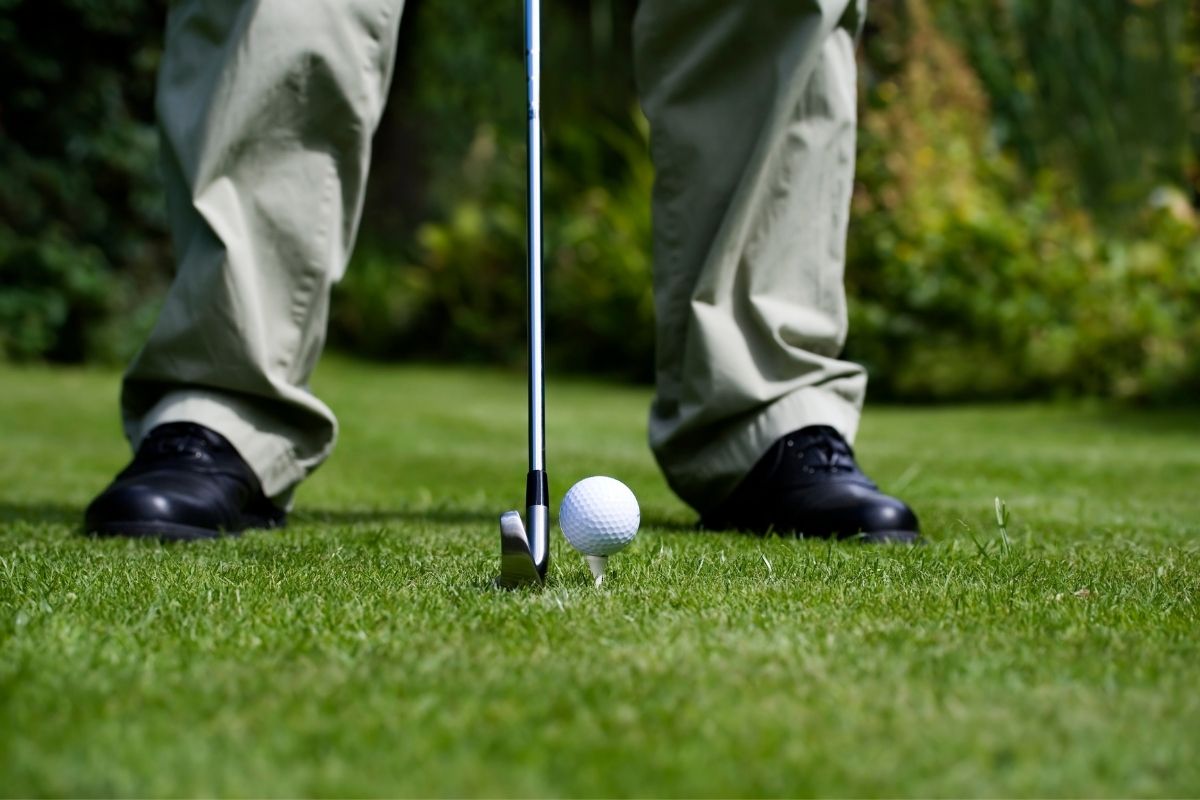We occasionally recommend products we love and might be paid a share of the sale.
Both fade and draw golf swings puts sidespin on the golf ball, which causes the shot to curve one way or the other.
Although excessively sidespin on a shot is normally undesirable, the moderate side-to-side movement of a draw or fade is frequently preferable to striking the ball perfectly straight.

Golfers may notice that their “natural” swing has a draw or fade shape, although many expert golfers can shape these shots on the fly.
The direction wherein the ball moves laterally is the main distinction between draw and fade shots. A draw golf shot will move slightly right-to-left for right-handed golfers, whereas a fade should travel slightly left-to-right.
We’ll go through the differences between a draw and a fade, the advantages of structuring golf shots, and how to hit both shot types in this article.
What Is A Fade?
A shot which fades from left to right is known as a fade. The spin imparted on the ball by the clubface being somewhat open compared to the swing path causes the ball to fade.
While the club is open in relation to the swing path, it is not open in relation to the target path. You’re more prone to slice your shot if the club is open compared to the target line at contact.
How To Play Golf With A Fade
In golf, there’s a simple way of hitting a fade:
- Aim the clubhead at your intended target.
- Open your body angle relative to the your aim line. This indicates your front foot is somewhat open, pointing slightly forward rather than exactly in front of you, and a line drawn from the right big toe. The left toe points left of your target.
- At impact, swing along your body’s path while maintaining the clubface pointing at your objective.
What Is A Draw?
A fade is the polar opposite of a draw. The draw is a shot which goes somewhat right then left in direction owing to the spin on the ball caused by the clubface becoming moderately closed in relation to the swing path.
How To Play Golf With A Draw
- Aim the clubhead at your intended target.
- Your body should be as slightly close to the aim line. A line drawn from the big toe on your right foot to the big toe on your left foot would point to the right of your target.
- Swing the club along your body’s path, making sure the clubface is pointed at your goal at impact.
You might also find it simpler if you move the ball back a little in your stance.

Shot Shaping Advantages
Both off the tee and when hitting approach shots, modifying your shot can be beneficial. Let’s start with the advantages of structuring your tee shot.
A draw is frequently the best shot shape on a dogleg left hole. By bending the ball all around the leftward bend, you can get nearer to the pin with a draw.
If you don’t strike the draw but instead strike the ball straight, you may remain on the fairway, albeit further away from the pin. In the identical situation, a fade will almost certainly send your ball into the rough on the right side of the fairway.
Fades and draws may help you avoid hazards on the fairway by improving your odds of avoiding them. Let’s look at the advantages of curving an approach shot from the fairway next.
The hole is now on the shorter right hand side of the fairway, beyond a bunker, in this case. To avoid landing shorter inside the fairway or sliding off the side of the green, aim towards the centre of the green with a straight shot.
You can go nearer to the pin whilst generally avoiding danger when you are fading your shot. Fading the ball adds overall spin to the ball, which helps keep it from sliding off the green.

Adapting To The Shape Of Your Shot
Without even attempting, you’re probably fading or drawing your ball on a few of your shots. No golfer can strike the ball completely straight every time he or she takes a swing. When it comes to drawing and fading, golfers often naturally choose to fade the ball.
It’s alright or even a bonus if your shots go straight or fade/draw. You can move your misses towards the left or right while you play. Practicing these shots with a 6-iron is often the best place to start.
If you want to fade a ball, target your shots so that either a straight or a fade can result in a simple followup shot. As in the preceding example, you should aim for the green’s centre. You’ll be safe in the centre of the green if you strike the ball straight on, but a fading shot could land nearer to the hole.
If you have a habit of spinning the ball too far towards the right side – a.k.a slicing, you may be tempted to aim even further to the left. Unfortunately, this tendency will often exasperate the problem.
If you consistently miss to both sides (slice or hook), then it’s probably beneficial to work on improving your consistency hitting straight shots before learning how to hit a draw or fade.
Final Thoughts
Hopefully, after using some of these simple suggestions, you’ll be ready to not only make a distinction between a draw and a fade, but also use this information to your own golf game.
Learning and practicing some of these strategies can make a dramatic contribution in a golf game, particularly for amateurs who are on the verge of breaking 80.
These approaches can be used to hit shots around doglegs or out of the trees, but they can also be used to target greens in specific places, overcome or avoid bunkers, minimize risk and so on.
- Funny Golf Terms - February 21, 2023
- How To Play Vegas Golf Game - February 16, 2023
- How To Play Wolf Golf Game - February 16, 2023








